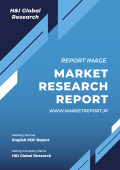1 INTRODUCTION
1.1 Study Assumptions
1.2 Scope of the Study
2 RESEARCH METHODOLOGY
3 EXECUTIVE SUMMARY
4 MARKET DYNAMICS
4.1 Market Overview
4.2 Market Drivers
4.3 Market Restraints
4.4 Porter’s Five Forces Analysis
4.4.1 Bargaining Power of Suppliers
4.4.2 Bargaining Power of Consumers
4.4.3 Threat of New Entrants
4.4.4 Threat of Substitute Products and Services
4.4.5 Intensity of Competitive Rivalry
5 MARKET SEGMENTATION
5.1 By Drugs
5.1.1 Oral Anti-diabetic drugs (Value and Volume 2016-2027)
5.1.1.1 Biguanides
5.1.1.1.1 Metformin
5.1.1.2 Alpha-glucosidase Inhibitors
5.1.1.3 Dopamine -D2 Receptor Agonist
5.1.1.3.1 Cycloset (Bromocriptin)
5.1.1.4 Sodium-glucose Cotransport -2 (SGLT-2) Inhibitors
5.1.1.4.1 Invokana (Canagliflozin)
5.1.1.4.2 Jardiance (Empagliflozin)
5.1.1.4.3 Farxiga/Forxiga (Dapagliflozin)
5.1.1.4.4 Suglat (Ipragliflozin)
5.1.1.5 Dipeptidyl Peptidase-4 (DPP-4) Inhibitors
5.1.1.5.1 Januvia (Sitagliptin)
5.1.1.5.2 Onglyza (Saxagliptin)
5.1.1.5.3 Tradjenta (Linagliptin)
5.1.1.5.4 Vipidia/Nesina (Alogliptin)
5.1.1.5.5 Galvus (Vildagliptin)
5.1.1.6 Sulfonylureas
5.1.1.7 Meglitinides
5.1.2 Insulin (Value and Volume 2016-2027)
5.1.2.1 Basal or Long-acting Insulin
5.1.2.1.1 Lantus (Insulin Glargine)
5.1.2.1.2 Levemir (Insulin Detemir)
5.1.2.1.3 Toujeo (Insulin Glargine)
5.1.2.1.4 Tresiba (Insulin Degludec)
5.1.2.1.5 Basaglar (Insulin Glargine)
5.1.2.2 Bolus or Fast-acting Insulin
5.1.2.2.1 NovoRapid/Novolog (Insulin Aspart)
5.1.2.2.2 Humalog (Insulin Lispro)
5.1.2.2.3 Apidra (Insulin Glulisine)
5.1.2.3 Traditional Human Insulin
5.1.2.3.1 Novolin/Actrapid/Insulatard
5.1.2.3.2 Humulin
5.1.2.3.3 Insuman
5.1.2.4 Biosimilar Insulin
5.1.2.4.1 Insulin Glargine Biosimilars
5.1.2.4.2 Human Insulin Biosimilars
5.1.3 Non-insulin Injectable Drug (Value and Volume 2016-2027)
5.1.3.1 GLP-1 Receptor Agonists
5.1.3.1.1 Victoza (Liraglutide)
5.1.3.1.2 Byetta (Exenatide)
5.1.3.1.3 Bydureon (Exenatide)
5.1.3.1.4 Trulicity (Dulaglutide)
5.1.3.1.5 Lyxumia (Lixisenatide)
5.1.3.2 Amylin Analogue
5.1.3.2.1 Symlin (Pramlintide)
5.1.4 Combination Drug (Value and Volume 2016-2027)
5.1.4.1 Combination Insulin
5.1.4.1.1 NovoMix (Biphasic Insulin Aspart)
5.1.4.1.2 Ryzodeg (Insulin Degludec and Insulin Aspart)
5.1.4.1.3 Xultophy (Insulin Degludec and Liraglutide)
5.1.4.2 Oral Combination
5.1.4.2.1 Janumet (Sitagliptin and Metformin HCl)
5.2 Geography
5.2.1 North America
5.2.1.1 United States (Value and Volume 2016-2027)
5.2.1.1.1 Oral Anti-diabetic Drugs
5.2.1.1.2 Insulin
5.2.1.1.3 Non-insulin Injectable Drugs
5.2.1.1.4 Combination Drugs
5.2.1.2 Canada (Value and Volume 2016-2027)
5.2.1.2.1 Oral Anti-diabetic Drugs
5.2.1.2.2 Insulin
5.2.1.2.3 Non-insulin Injectable Drugs
5.2.1.2.4 Combination Drugs
5.2.1.3 Rest of North America (Value and Volume 2016-2027)
5.2.1.3.1 Oral Anti-diabetic Drugs
5.2.1.3.2 Insulin
5.2.1.3.3 Non-insulin Injectable Drugs
5.2.1.3.4 Combination Drugs
5.2.2 Europe
5.2.2.1 France (Value and Volume 2016-2027)
5.2.2.1.1 Oral Anti-diabetic Drugs
5.2.2.1.2 Insulin
5.2.2.1.3 Non-insulin Injectable Drugs
5.2.2.1.4 Combination Drugs
5.2.2.2 Germany (Value and Volume 2016-2027)
5.2.2.2.1 Oral Anti-diabetic Drugs
5.2.2.2.2 Insulin
5.2.2.2.3 Non-insulin Injectable Drugs
5.2.2.2.4 Combination Drugs
5.2.2.3 Italy (Value and Volume 2016-2027)
5.2.2.3.1 Oral Anti-diabetic Drugs
5.2.2.3.2 Insulin
5.2.2.3.3 Non-insulin Injectable Drugs
5.2.2.3.4 Combination Drugs
5.2.2.4 Spain (Value and Volume 2016-2027)
5.2.2.4.1 Oral Anti-diabetic Drugs
5.2.2.4.2 Insulin
5.2.2.4.3 Non-insulin Injectable Drugs
5.2.2.4.4 Combination Drugs
5.2.2.5 United Kingdom (Value and Volume 2016-2027)
5.2.2.5.1 Oral Anti-diabetic Drugs
5.2.2.5.2 Insulin
5.2.2.5.3 Non-insulin Injectable Drugs
5.2.2.5.4 Combination Drugs
5.2.2.6 Russia (Value and Volume 2016-2027)
5.2.2.6.1 Oral Anti-diabetic Drugs
5.2.2.6.2 Insulin
5.2.2.6.3 Non-insulin Injectable Drugs
5.2.2.6.4 Combination Drugs
5.2.2.7 Rest of Europe (Value and Volume 2016-2027)
5.2.2.7.1 Oral Anti-diabetic Drugs
5.2.2.7.2 Insulin
5.2.2.7.3 Non-insulin Injectable Drugs
5.2.2.7.4 Combination Drugs
5.2.3 Latin America
5.2.3.1 Mexico (Value and Volume 2016-2027)
5.2.3.1.1 Oral Anti-diabetic Drugs
5.2.3.1.2 Insulin
5.2.3.1.3 Non-insulin Injectable Drugs
5.2.3.1.4 Combination Drugs
5.2.3.2 Brazil (Value and Volume 2016-2027)
5.2.3.2.1 Oral Anti-diabetic Drugs
5.2.3.2.2 Insulin
5.2.3.2.3 Non-insulin Injectable Drugs
5.2.3.2.4 Combination Drugs
5.2.3.3 Rest of Latin America (Value and Volume 2016-2027)
5.2.3.3.1 Oral Anti-diabetic Drugs
5.2.3.3.2 Insulin
5.2.3.3.3 Non-insulin Injectable Drugs
5.2.3.3.4 Combination Drugs
5.2.4 Asia-Pacific
5.2.4.1 Japan (Value and Volume 2016-2027)
5.2.4.1.1 Oral Anti-diabetic Drugs
5.2.4.1.2 Insulin
5.2.4.1.3 Non-insulin Injectable Drugs
5.2.4.1.4 Combination Drugs
5.2.4.2 South Korea (Value and Volume 2016-2027)
5.2.4.2.1 Oral Anti-diabetic Drugs
5.2.4.2.2 Insulin
5.2.4.2.3 Non-insulin Injectable Drugs
5.2.4.2.4 Combination Drugs
5.2.4.3 China (Value and Volume 2016-2027)
5.2.4.3.1 Oral Anti-diabetic Drugs
5.2.4.3.2 Insulin
5.2.4.3.3 Non-insulin Injectable Drugs
5.2.4.3.4 Combination Drugs
5.2.4.4 India (Value and Volume 2016-2027)
5.2.4.4.1 Oral Anti-diabetic Drugs
5.2.4.4.2 Insulin
5.2.4.4.3 Non-insulin Injectable Drugs
5.2.4.4.4 Combination Drugs
5.2.4.5 Australia (Value and Volume 2016-2027)
5.2.4.5.1 Oral Anti-diabetic Drugs
5.2.4.5.2 Insulin
5.2.4.5.3 Non-insulin Injectable Drugs
5.2.4.5.4 Combination Drugs
5.2.4.6 Vietnam (Value and Volume 2016-2027)
5.2.4.6.1 Oral Anti-diabetic Drugs
5.2.4.6.2 Insulin
5.2.4.6.3 Non-insulin Injectable Drugs
5.2.4.6.4 Combination Drugs
5.2.4.7 Malaysia (Value and Volume 2016-2027)
5.2.4.7.1 Oral Anti-diabetic Drugs
5.2.4.7.2 Insulin
5.2.4.7.3 Non-insulin Injectable Drugs
5.2.4.7.4 Combination Drugs
5.2.4.8 Indonesia (Value and Volume 2016-2027)
5.2.4.8.1 Oral Anti-diabetic Drugs
5.2.4.8.2 Insulin
5.2.4.8.3 Non-insulin Injectable Drugs
5.2.4.8.4 Combination Drugs
5.2.4.9 Philippines (Value and Volume 2016-2027)
5.2.4.9.1 Oral Anti-diabetic Drugs
5.2.4.9.2 Insulin
5.2.4.9.3 Non-insulin Injectable Drugs
5.2.4.9.4 Combination Drugs
5.2.4.10 Thailand (Value and Volume 2016-2027)
5.2.4.10.1 Oral Anti-diabetic Drugs
5.2.4.10.2 Insulin
5.2.4.10.3 Non-insulin Injectable Drugs
5.2.4.10.4 Combination Drugs
5.2.4.11 Rest of Asia-Pacific (Value and Volume 2016-2027)
5.2.4.11.1 Oral Anti-diabetic Drugs
5.2.4.11.2 Insulin
5.2.4.11.3 Non-insulin Injectable Drugs
5.2.4.11.4 Combination Drugs
5.2.5 Middle-East
5.2.5.1 Saudi Arabia (Value and Volume 2016-2027)
5.2.5.1.1 Oral Anti-diabetic Drugs
5.2.5.1.2 Insulin
5.2.5.1.3 Non-insulin Injectable Drugs
5.2.5.1.4 Combination Drugs
5.2.5.2 Iran (Value and Volume 2016-2027)
5.2.5.2.1 Oral Anti-diabetic Drugs
5.2.5.2.2 Insulin
5.2.5.2.3 Non-insulin Injectable Drugs
5.2.5.2.4 Combination Drugs
5.2.5.3 Egypt (Value and Volume 2016-2027)
5.2.5.3.1 Oral Anti-diabetic Drugs
5.2.5.3.2 Insulin
5.2.5.3.3 Non-insulin Injectable Drugs
5.2.5.3.4 Combination Drugs
5.2.5.4 Oman (Value and Volume 2016-2027)
5.2.5.4.1 Oral Anti-diabetic Drugs
5.2.5.4.2 Insulin
5.2.5.4.3 Non-insulin Injectable Drugs
5.2.5.4.4 Combination Drugs
5.2.5.5 South Africa (Value and Volume 2016-2027)
5.2.5.5.1 Oral Anti-diabetic Drugs
5.2.5.5.2 Insulin
5.2.5.5.3 Non-insulin Injectable Drugs
5.2.5.5.4 Combination Drugs
5.2.5.6 Rest of Middle-East (Value and Volume 2016-2027)
5.2.5.6.1 Oral Anti-diabetic Drugs
5.2.5.6.2 Insulin
5.2.5.6.3 Non-insulin Injectable Drugs
5.2.5.6.4 Combination Drugs
6 MARKET INDICATORS
6.1 Type-1 Diabetes Population (2016-2027)
6.2 Type-2 Diabetes Population (2016-2027)
7 COMPETITIVE LANDSCAPE
7.1 Company Profiles
7.1.1 Novo Nordisk
7.1.2 Sanofi
7.1.3 Eli Lilly and Company
7.1.4 Biocon
7.1.5 AstraZeneca
7.1.6 Bristol Myers Squibb
7.1.7 Boehringer Ingelheim
7.1.8 Mylan
7.1.9 Pfizer
7.1.10 Johnson & Johnson
7.1.11 Merck & Co.
7.1.12 Novartis
7.1.13 Astellas Pharma
7.1.14 Teva Pharmaceuticals
7.2 Company Share Analysis
7.2.1 Insulin Drugs
7.2.1.1 Novo Nordisk
7.2.1.2 Sanofi
7.2.1.3 Eli Lilly and Company
7.2.1.4 Others
8 MARKET OPPORTUNITIES AND FUTURE TRENDS











